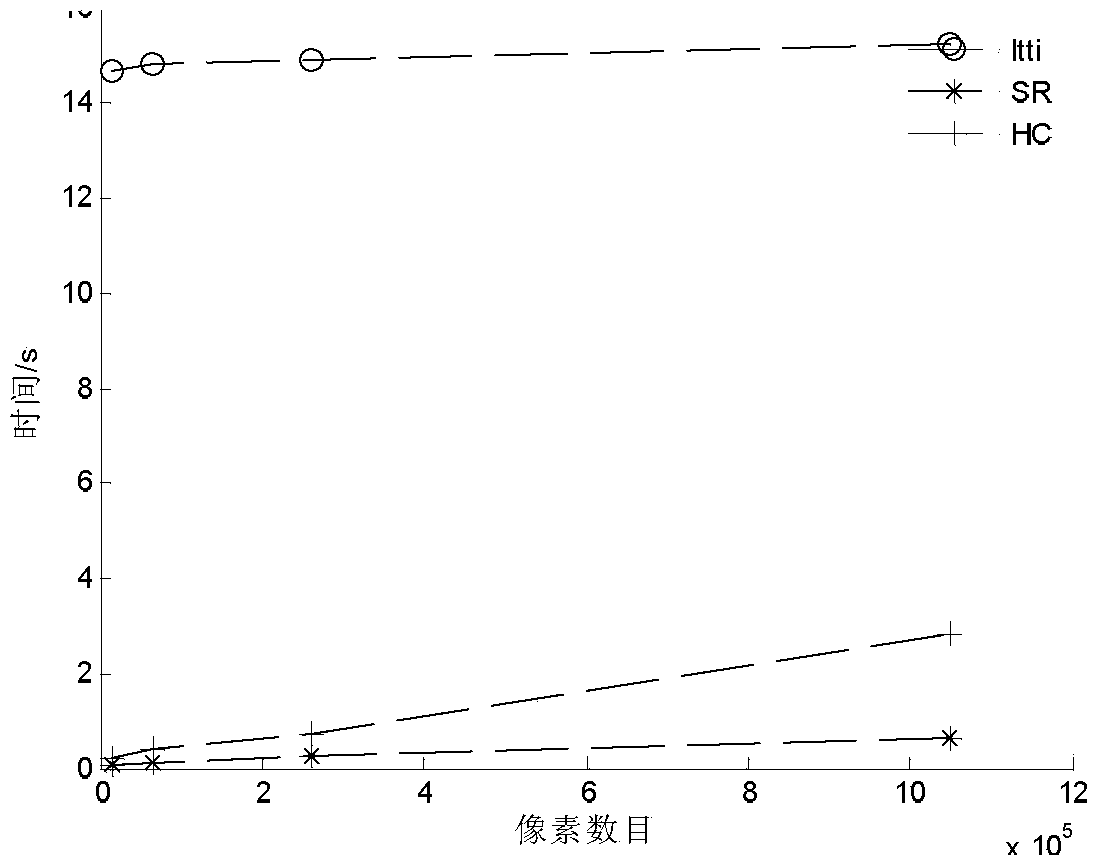Region of Interest Extraction Method for Large Format Remote Sensing Imagery Based on Visual Attention Mechanism
A technology of visual attention mechanism and region of interest, applied in the field of remote sensing image processing, can solve the problem of lack of the ability to search for potential targets in large-scale remote sensing images, and achieve the effect of extraction
- Summary
- Abstract
- Description
- Claims
- Application Information
AI Technical Summary
Problems solved by technology
Method used
Image
Examples
specific Embodiment approach 1
[0037] Embodiment 1. The method for extracting a region of interest from a large-scale remote sensing image based on a visual attention mechanism described in this embodiment is carried out in the following steps:
[0038] Step 1. Target and ROI characteristic analysis:
[0039] Characteristic analysis is the basis of region of interest extraction (ROI). The characteristics of the target and the region of interest can be used as prior knowledge for the next level of ROI extraction. The distribution density of certain geometric features of the target can reflect the position distribution of the target. , so the characteristic analysis of the target and the region of interest can largely determine the accuracy of ROI extraction.
[0040] Target and area of interest characteristics analysis, respectively analyze the target characteristics of man-made targets with regular shape and regular distribution, and irregular-shaped natural features, and study the distribution of man-mad...
specific Embodiment approach 2
[0058] Specific Embodiment 2. This embodiment is a further description of the method for extracting regions of interest from large-format remote sensing images based on the visual attention mechanism described in Specific Embodiment 1. The method described in Step 1 is aimed at artificial objects with regular shapes and regular distribution. The commonly used geometric parameters when analyzing the target and the target characteristics of irregularly shaped natural features are: ①Circularity C 1
[0059] C 1 =P 2 / A 0 (1)
[0060] where P is the perimeter of the object, A 0 is the area of the object. When the object is circular, the minimum value of circularity is 4π, and the more complicated the shape, the larger the value;
[0061] ②Body ratio C 2
[0062] C 2 =W / L (2)
[0063] Among them, W is the width of the smallest circumscribing rectangle of the object, L is the length of the smallest circumscribing rectangle of the object, and when the object is a square o...
specific Embodiment approach 3
[0073] Specific embodiment three, this embodiment is a further description of the large-scale remote sensing image region of interest extraction method based on the visual attention mechanism described in the specific embodiment one or two, and the Itti model described in the step 2 is to the input image I(x ,y) Gaussian pyramid G(x,y,σ) is used to perform non-uniform sampling at different levels, which is defined as follows:
[0074]
[0075] in, is the convolution operator;
[0076] The brightness of the image and the components on the red, green, blue, and yellow color channels of the original image are expressed as:
[0077]
[0078] R(x)=r(x)-(g(x)+b(x)) / 2
[0079] G(x)=g(x)-(r(x)+b(x)) / 2 (7)
[0080] B(x)=b(x)-(r(x)+g(x)) / 2
[0081] Y(x)=(r+g) / 2-|r(x)-g(x)| / 2-b(x)
[0082] Among them, I(x) is the image brightness, R(x) is the component on the red channel, G(x) is the component on the green channel, B(x) is the component on the blue channel, Y(x) is yellow co...
PUM
 Login to View More
Login to View More Abstract
Description
Claims
Application Information
 Login to View More
Login to View More - R&D
- Intellectual Property
- Life Sciences
- Materials
- Tech Scout
- Unparalleled Data Quality
- Higher Quality Content
- 60% Fewer Hallucinations
Browse by: Latest US Patents, China's latest patents, Technical Efficacy Thesaurus, Application Domain, Technology Topic, Popular Technical Reports.
© 2025 PatSnap. All rights reserved.Legal|Privacy policy|Modern Slavery Act Transparency Statement|Sitemap|About US| Contact US: help@patsnap.com



